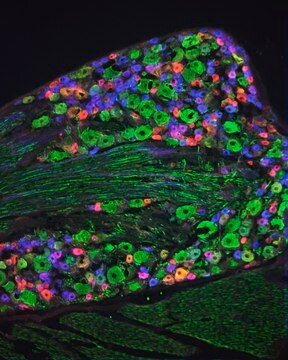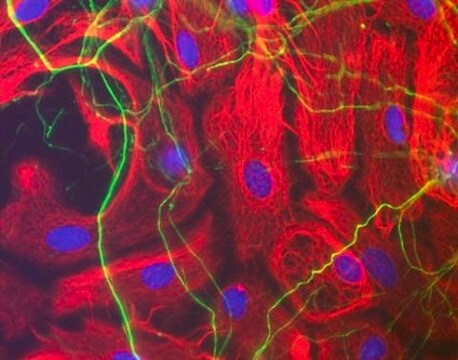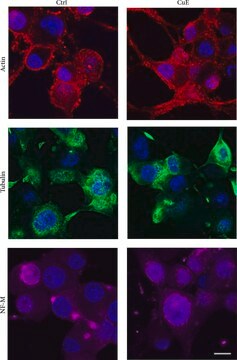おすすめの製品
由来生物
mouse
品質水準
抗体製品の状態
purified from hybridoma cell culture
抗体製品タイプ
primary antibodies
クローン
NE14, monoclonal
形状
buffered aqueous solution
分子量
~200 kDa
化学種の反応性
feline, rat, guinea pig, pig, human, mouse, bovine, chicken
濃度
~1.0 mg/mL
テクニック
immunoblotting: 1.25-2.5 μg/mL using rat brain S1 fraction
immunohistochemistry: 5-10 μg/mL using enzyme treated formalin-fixed, paraffin-embedded rat brain or mouse brain sections
アイソタイプ
IgG1
UniProtアクセッション番号
輸送温度
dry ice
保管温度
−20°C
ターゲットの翻訳後修飾
unmodified
遺伝子情報
bovine ... Nefh(528842)
cat ... Nefh(101087272)
chicken ... Nefh(417020)
human ... NEFH(4744)
mouse ... Nefh(380684)
pig ... Nefh(100156492)
rat ... Nefh(24587)
詳細
免疫原
アプリケーション
生物化学的/生理学的作用
物理的形状
適切な製品が見つかりませんか。
製品選択ツール.をお試しください
保管分類コード
10 - Combustible liquids
引火点(°F)
Not applicable
引火点(℃)
Not applicable
適用法令
試験研究用途を考慮した関連法令を主に挙げております。化学物質以外については、一部の情報のみ提供しています。 製品を安全かつ合法的に使用することは、使用者の義務です。最新情報により修正される場合があります。WEBの反映には時間を要することがあるため、適宜SDSをご参照ください。
Jan Code
SAB4200747-BULK:
SAB4200747-VAR:
SAB4200747-100UL:
試験成績書(COA)
製品のロット番号・バッチ番号を入力して、試験成績書(COA) を検索できます。ロット番号・バッチ番号は、製品ラベルに「Lot」または「Batch」に続いて記載されています。
この製品を見ている人はこちらもチェック
ライフサイエンス、有機合成、材料科学、クロマトグラフィー、分析など、あらゆる分野の研究に経験のあるメンバーがおります。.
製品に関するお問い合わせはこちら(テクニカルサービス)






